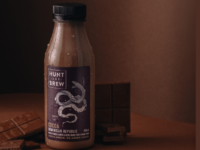The vegan frozen meals category is growing exponentially – but they lack a consistently findable home in store freezers, according to analysis by Snooper.
In a nation known for its quality livestock and meat-filled BBQs, one in three Australians are now consciously limiting their meat consumption due primarily to health reasons, followed by the environment, animal welfare and an increasing variety of plant-based options. Covid-19 has only served to accelerate the shift to plant-based alternatives, with the April-June 2020 period seeing a 60-per-cent increase versus the same period in 20191, likely due in part to out-of-stocks of traditional meat products early in the pandemic.
We are collectively seeing the rise of plant-based and meat alternative products and meals in ambient, chilled, and frozen formats. According to Deloitte, Australia’s plant-based meat sector is expected to grow from $150 million in 2019 to almost $3 billion in consumer expenditure by 20302. Nearly four in five (79 per cent) of millennials already eat plant-based meals and an almost identical percentage of Generation Z eat plant-based meals between once or twice a week3.
Frozen meals rule the vegan (chicken-free) roost in supermarkets
At the start of 2018 there were no plant-based meat products stocked in the meat section at any of Australia’s major supermarkets. Fast forward to the beginning of last year, and there were over 20 vegan meat products stocked in the meat section from a variety of domestic and international food companies in Coles alone4.
According to IRI, within total frozen meals, vegan and vegetarian options brought in nearly 40 per cent of new shoppers in a 12-month period, with vegan and vegetarian options outperforming traditional meat-based meals5. Naturally, this saw the proliferation of a number of new meat-free SKUs, growing at seven times the rate of traditional meat-based SKUs within frozen meals.
Looking at plant-based meal formats in the supermarket, frozen vegan meals account for approximately 65 per cent of sales6. But while frozen vegan meals may be the most common vegan meal format, this doesn’t mean they are easy to find instore.
Finding the right home for frozen vegan meals
Snooper’s shoppers visited 700 independent stores. Distribution of frozen plant-based meat alternative brands was found to be high, with 90 per cent of stores ranging at least one brand, and an average of four brands ranged per store. The top distributed brands in the independent store network were MorningStar (65 per cent of stores), followed by Gardein at 52 per cent and Quorn at 48 per cent. However there is a long tail, with more than 20 brands observed across the country. On average four shelves were allocated to frozen plant-based brands, but 20 per cent of stores were allocating one shelf or less to the category, which doesn’t seem to reflect the growth forecast by the industry.
Given there is no consistent aisle flow for the frozen category across independent stores, plant-based meal alternatives could be displayed next to ice cream, meat pies, vegetables, frozen spring rolls or potatoes. Our shoppers indicated that clearly separating the Freezer space with Vegetarian/Vegan POS would help the ease of navigation (see Photo A). In some cases we observed a separate “Free From” Freezer where the subcategory flow was Gluten Alternatives > Meat Alternatives > Dairy Alternatives.

Shelf planogram strategy within independent stores was focused around first, category blocking including all frozen meat alternatives (see Photo B), and then within this brand blocking rather than type of meat alternative (see Photo C). This suggests that shoppers would be browsing the shelf for their favourite brand first and then pick between the type of meat alternative. However, given that the category is growing and there are many shoppers new to the category, the category may not yet be familiar enough to many shoppers for easy selection by brand.


There were indications share of space and category blocking had an influence on ease of finding frozen meat alternatives. Our shoppers rated ease of finding the category 33-per-cent higher in stores with more than eight shelves allocated to frozen meat alternatives, likely because the extra space makes the category more visible overall.
Maximising the frozen vegan opportunity
For meat alternative brands, distribution needs to be driven in stores with the highest volume potential. This can be achieved by mapping locations which already overindex in category share of space (IGA Supa New Lambton for instance had devoted four out of 32 doors, or 12.5 per cent of its space, to vegan products).
Secondly, brands can assist store owners to capitalise on this growing category. For instance, for stores with no vegan products, target being the first brand ranged and provide advice on category fair share of space.
Thirdly, the category can and should be supported with category header point of sale to make it more easily findable.
- Laurie Wespes is founder and CEO of Snooper, which connects brands and retailers to a community of thousands of shoppers who collect in-store data and consumer insights to track brand performance and identify areas and stores of growth potential in real time.
References:
- https://www.afr.com/life-and-luxury/food-and-wine/pandemic-accelerates-shift-to-meat-substitutes-20200428-p54nxn
- https://www.foodfrontier.org/wp-content/uploads/2019/10/Hungry-For-Plant-Based-Australian-Consumer-Insights-Oct-2019.pdf;https://www.foodfrontier.org/wp-content/uploads/2019/09/Meat-the-Alternative-Food-Frontier.pdf
- https://www.asx.com.au/asxpdf/20200812/pdf/44lf5z4k8d16fy.pdf
- https://vegconomist.com/market-and-trends/2019-the-year-veganism-went-mainstream-in-australian-retail/
- https://insidefmcg.com.au/2020/08/11/the-flexitarian-impact-on-the-frozen-aisle/
- https://www.prnewswire.com/news-releases/the-global-plant-based-meat-market-by-revenue-is-expected-to-grow-at-a-cagr-of-over-18-during-the-period-20192025-301123673.html











